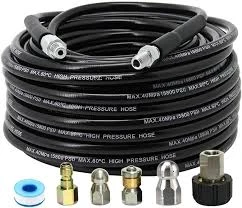ac piping
Understanding AC Piping in HVAC Systems
Air conditioning (AC) systems are essential for maintaining comfortable indoor climates, particularly in regions with extreme temperatures. One crucial component of these systems is the piping, which plays a vital role in the overall efficiency and functionality of AC units. In this article, we will explore the significance of AC piping, its types, installation, and maintenance.
What is AC Piping?
AC piping refers to the network of pipes that transport refrigerant and sometimes condensate fluids between the various components of an air conditioning system, such as the compressor, evaporator, and condenser. The piping system is responsible for ensuring the proper flow of refrigerant, allowing the unit to absorb heat from inside a space and release it outside, thus cooling the indoor air.
Types of AC Piping
There are primarily two types of piping used in AC systems copper and PVC.
1. Copper Piping Copper is the most commonly used material for AC piping due to its excellent thermal conductivity, corrosion resistance, and ability to handle high pressure. Copper pipes are generally available in various diameters and can be easily bent and shaped to fit specific installations, making them a versatile choice for both residential and commercial applications.
2. PVC Piping While less common in refrigerant lines, PVC piping may be used for drainage purposes in AC systems. Its lightweight nature and resistance to corrosion make it a suitable option for the removal of condensate water, which is crucial for preventing water pooling and potential damage to the system.
Installation of AC Piping
Proper installation of AC piping is critical for the efficiency and performance of an AC system. It is essential to follow manufacturer guidelines and industry standards during installation. Key considerations include
ac piping

- Proper Sizing Pipes must be sized correctly to ensure optimal refrigerant flow and minimize pressure drops. Undersized pipes can lead to increased energy consumption and reduced cooling efficiency.
- Insulation Insulating refrigerant lines is necessary to prevent energy loss. Insulation helps maintain the desired temperature of the refrigerant as it travels through the system, improving overall efficiency.
- Minimizing Bends and Joints Reducing the number of bends and joints in the piping helps decrease refrigerant flow resistance, contributing to the system's overall efficiency.
Maintenance of AC Piping
Regular maintenance of AC piping is crucial for ensuring long-term performance. Here are some tips for maintaining your AC piping
- Inspections Regularly inspect pipes for signs of corrosion, leaks, or damage. Early detection of issues can prevent more extensive repairs and system failures.
- Cleaning Keeping the pipes clean, especially the condensate lines, is vital to preventing blockages that can lead to water damage and system inefficiencies.
- Professional Servicing Engaging a qualified HVAC technician for periodic servicing ensures that the entire system, including the piping, functions optimally.
Conclusion
Understanding AC piping is essential for anyone looking to maintain or install an air conditioning system. Proper material selection, installation, and maintenance are key factors that significantly impact the performance and longevity of HVAC systems. By ensuring efficient piping in your AC unit, you can enjoy a more comfortable indoor environment while also optimizing energy use.
-
Ultimate Spiral Protection for Hoses & CablesNewsJun.26,2025
-
The Ultimate Quick-Connect Solutions for Every NeedNewsJun.26,2025
-
SAE J1401 Brake Hose: Reliable Choice for Safe BrakingNewsJun.26,2025
-
Reliable J2064 A/C Hoses for Real-World Cooling NeedsNewsJun.26,2025
-
Heavy-Duty Sewer Jetting Hoses Built to LastNewsJun.26,2025
-
Fix Power Steering Tube Leaks Fast – Durable & Affordable SolutionNewsJun.26,2025

